All about lavender angustifolia
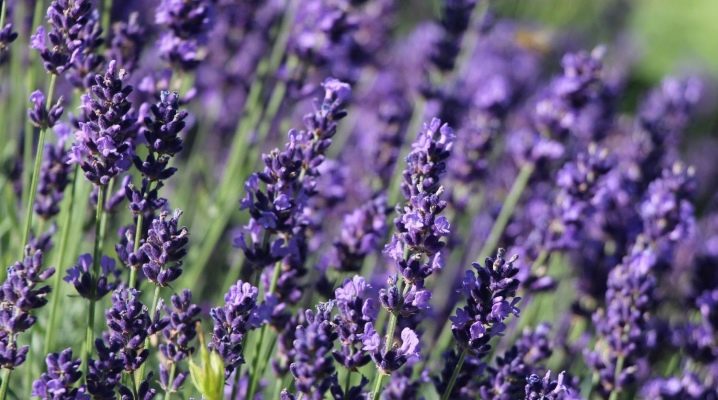
Narrow-leaved lavender is a fairly ancient plant, which was cultivated in ancient Rome. The culture is still popular today and is grown everywhere.

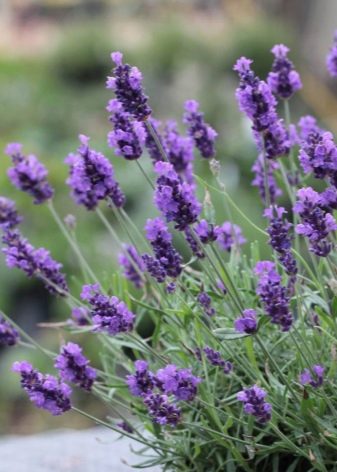
Description
The description of narrow-leaved lavender should begin with a small excursion into history. The first flowers are found in Ancient Egypt, but under a different name. The Egyptians considered this flower a gift from God due to its medicinal and inexplicable properties. According to various legends and legends, Cleopatra seduced males with the help of lavender. And also with the help of a flower, it was possible to accelerate the regeneration of various wounds, to get rid of serious diseases. Even in the tombs of the pharaohs, you can see dried branches of lavender.
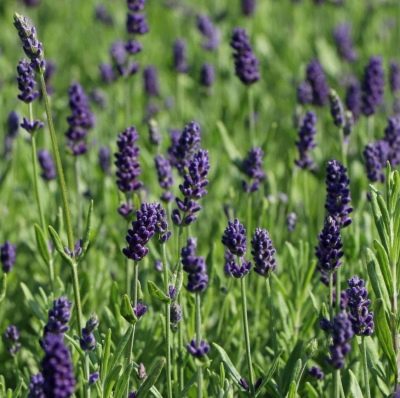
In Russia, the narrow-leaved species first appeared only closer to the beginning of the 19th century, when plant samples were brought to enrich the collection of the Nikitsky Botanical Garden. Today, culture is actively cultivated in Crimea not only by private gardeners, but also by owners of entire enterprises.
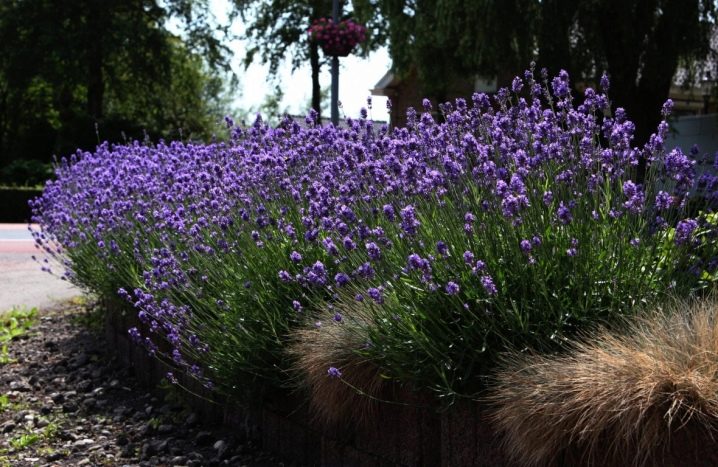
It is worth considering the key features of the culture.
-
Rhizome. The roots of the plant are woody. Powerful branches form a strong root system through which nutrients are supplied to the plant.
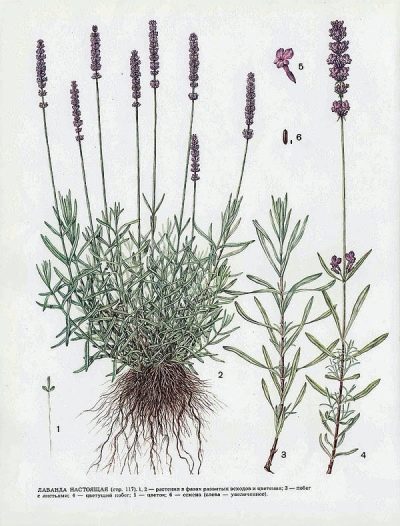
- Leaves. The leaf plates have a pleasant grayish-green tint. The surface is slightly pubescent, the shape of the leaves is oblong-linear, with slightly curled edges. The maximum length of the plate is 6 cm.
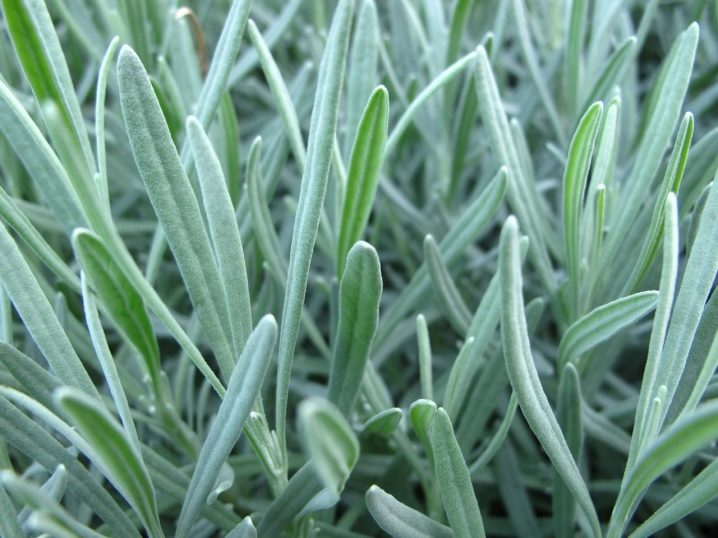
- Flowers. The plant forms spike-shaped inflorescences of several buds, which are located closer to the crown of the stems. Flowers are considered one of the most attractive parts of lavender, for which the plant is prized by gardeners.
In addition to their attractive appearance, they are distinguished by a rich aroma, which remains even when the petals are dried.
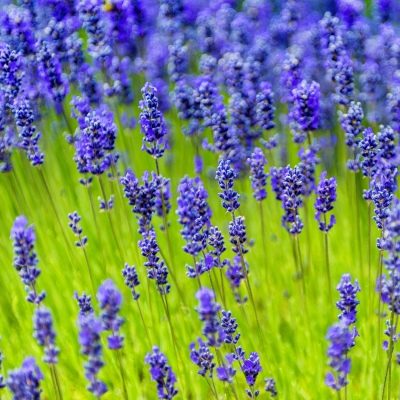
- Fetus. Towards the end of ripening, lavender produces fruits in the form of a four-root, complemented by a small flower cup.
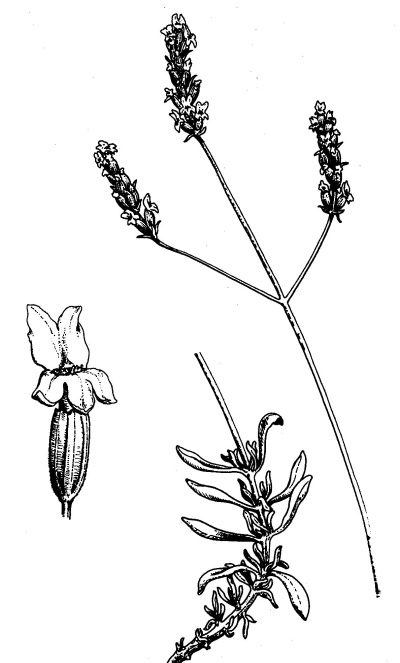
Narrow-leaved lavender attracts gardeners and landscape designers with its resistance to climatic influences. Flowers and other elements of the plant, as they grow, emit a pleasant and rather persistent aroma, which is appreciated by manufacturers of cosmetics and perfumery.
Varieties
Narrow-leaved lavender has several varieties. We list the most common varieties of the family.
-
«Angustifolia ". A variety of English origin, which also takes root well in the domestic climate. It looks pretty impressive and pretty. The advantages of the variety include a bright aroma, large stems and powerful leaves. The variety grows rather quickly.
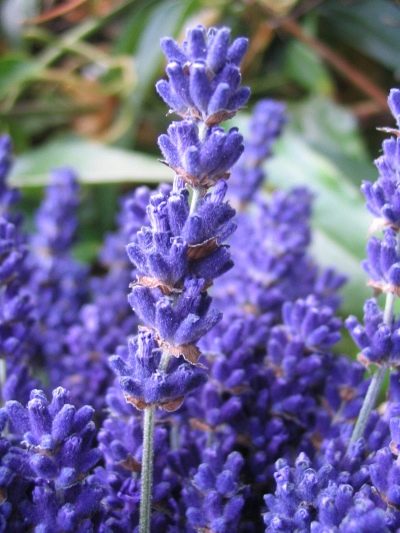
- "Hydcot". The most popular variety of narrow-leaved lavender, which can be found in the form of hedges in many regions of the country. It features compact bushes that produce purple and blue flowers. Small leaves and rich smell are additional characteristics of the plant. The variety is quite common in the landscape, is actively used in a variety of garden compositions.

- Hidcote Blue. The Russian name of the variety is "Pink Hydcot". Lavender stands out for its unusual color of flowers, they have a soft pink hue. And also among the characteristics they distinguish a pleasant smell, long flowering and small fruits.
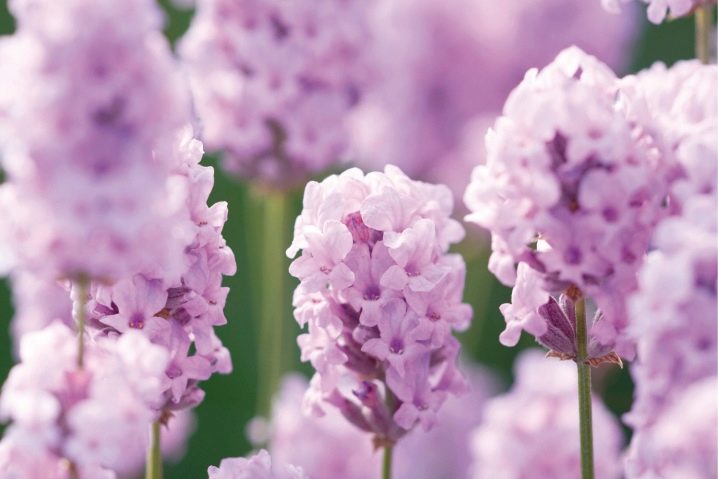
- Manstead. Another popular lavender variety with a characteristic feature in the form of compact bushes, the height of which does not exceed 35 cm.The plant is mainly used to decorate sidewalks or garden paths. And also with the help of the variety, they frame flower beds, thus completing an interesting composition. Additional properties of the variety include increased resistance to strong winds.

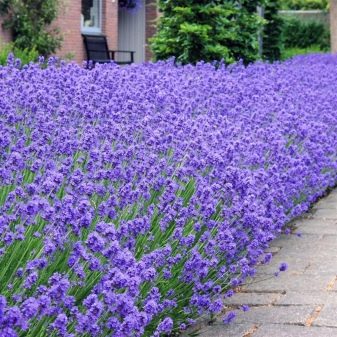
- Rosea. The maximum height of Rosea lavender bushes reaches 50 cm, which also refers to the group of compact plants. The cultivar forms small flowers with a characteristic lilac or pink hue, which goes well with rich green foliage.

- Dwarf Blue. One of the brightest varieties that attracts gardeners with rich purple inflorescences. Dwarf Blue is a variety that is resistant to sudden changes in temperature. It survives drought well with timely watering, pleases with long flowering.
The variety is easy to care for if you follow the basic agrotechnical recommendations.
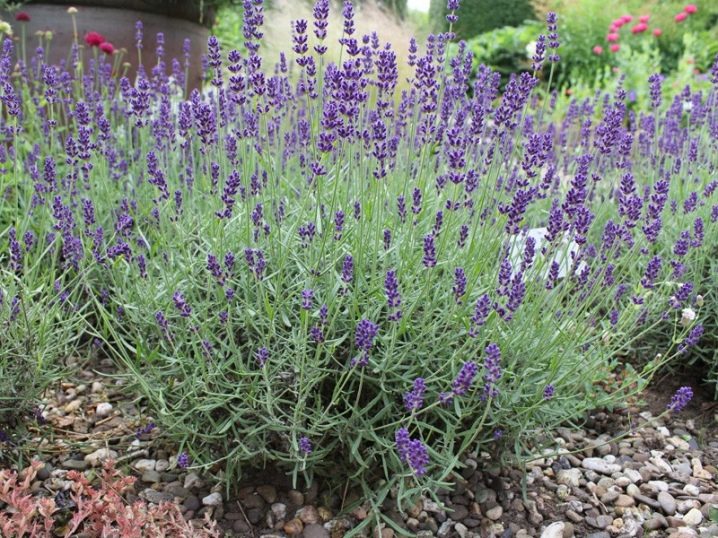
- Nana Alba. A key feature of the variety is its unusual flowers, the shade of which does not go further than white. The variety is popular with landscape designers who often use it in various compositions.
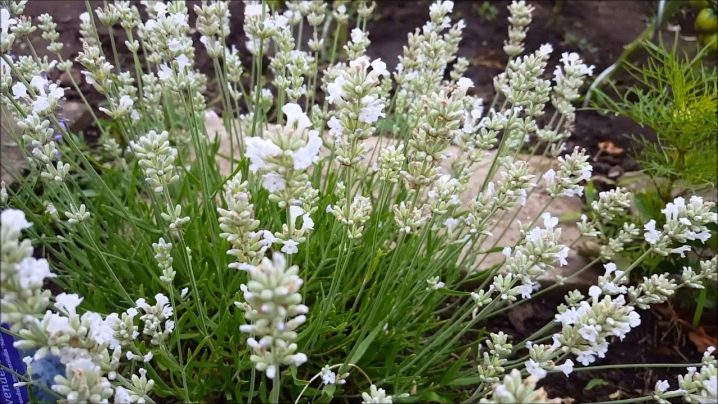
- Vera. Lavender variety bred by Dutch breeders. It is a rather tall plant, the bushes of which rise up to a meter. Lavender forms delicate blue flowers that attract attention with a bright and long-lasting scent. Often found in the landscape.
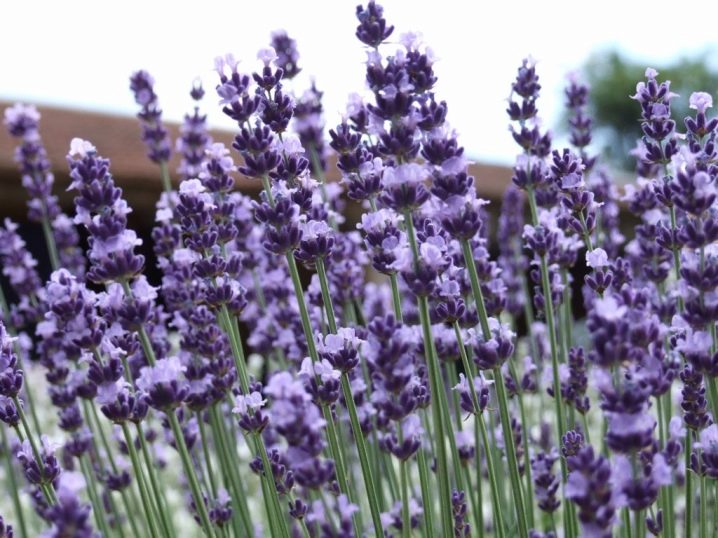
There are other varieties of narrow-leaved lavender, which are actively used both for landscape planting and for cultivation for the production of medical or cosmetic products, perfumes. For example, often talk about lavender "Anna", "Blue", spikelet bushes, variety "Grosso", "Provence", Spear. Each variety has its own name in Latin, some perennial plants are often found in the form of plantings in Russia.
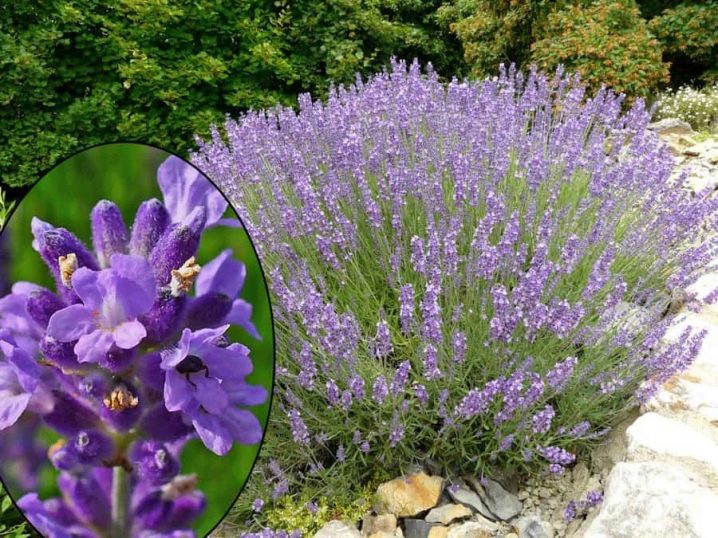
Landing
It is recommended to plant lavender in open ground no later than mid-autumn - maximum in early October. Before planting a bush, you need to prepare the seed.
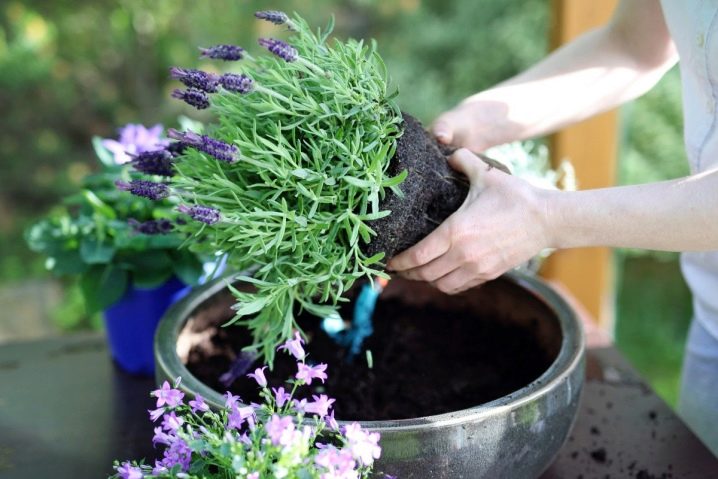
Main steps.
-
Selection. First, the seeds are selected, leaving whole and large samples, which have a fairly high chance of survival.
-
Disinfection. Further, the remaining samples are soaked in special solutions to strengthen immunity or hardened.
-
Treatment. Finally, the seeds are sprayed with stimulating compounds in order for the lavender to take root faster and start active growth.
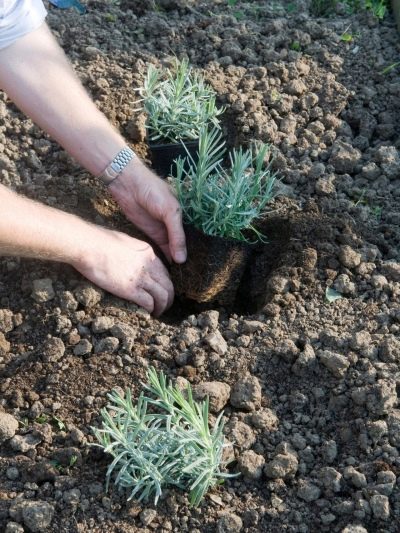
Next, the seeds are planted in previously prepared containers with fertile soil, covered with transparent material and placed in a sunny place.
After 3-4 weeks, a transplant is performed in the open ground in accordance with the following rules.
-
When growing seedlings at home, transplanting into open ground should be carried out in early May.
-
The deepening in the ground where the seedlings will be placed should not exceed 15-20 cm.
-
The roots should go as deep as possible into the hole.
-
Before planting, you need to trim the roots slightly.
-
Between seedlings, it is necessary to maintain at least 70 cm when planting compact bushes and at least a meter when planting tall bushes.
After planting, the roots are covered with earth, the plant is watered abundantly.
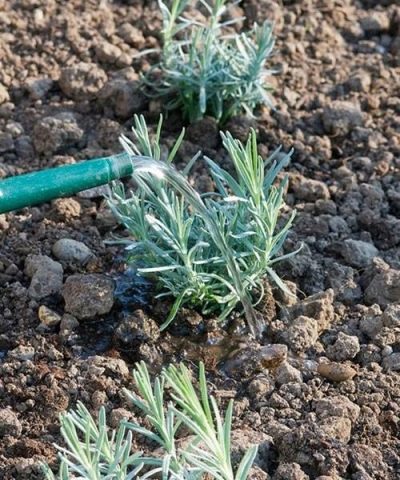
Care
Compliance with agrotechnical recommendations will help lavender quickly take root and start active growth, and also promotes long flowering.
Watering
Lavender is drought resistant and does not require regular watering. To achieve active growth and flowering of lavender, water should be applied to the soil once a week or 10 days. When watering, special attention should be paid to seedlings that are grown in a pot at home. At first, they need abundant watering.
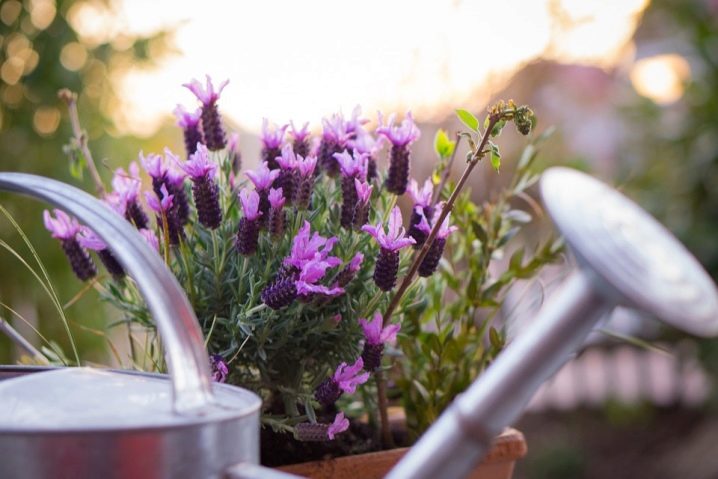
Spraying
In the heat, the bushes may need additional watering, otherwise there is a high probability that the flower will dry out. In this case, the plant should be moistened by spraying with lavender leaves. The best solution would be to use an irrigation system.

Humidity
Water is a fairly important element, regardless of the type of plant, and narrow-leaved lavender is no exception. However, too high a moisture reading will be dangerous for the bushes.
Therefore, it is recommended to plant the plant in areas with low water table so that the roots of the lavender do not start to rot. Taking care of the bush is not difficult if you take into account the necessary advice in advance.

Top dressing
Gardeners strive to ensure that lavender bushes gain green mass as quickly as possible. This is helped by feeding in the form of mineral complexes. Particular preference is advised to give nitrogen fertilizers, which are applied during the period of foliage formation. When the plant begins to bloom, the choice should be stopped on potassium-phosphorus compositions.
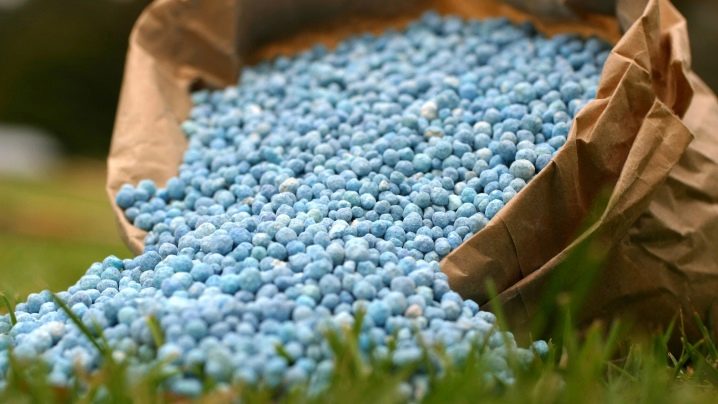
Diseases
Narrow-leaved lavender cannot boast of strong immunity. The plant does not survive attacks:
-
spider mite;
-
rainbow beetle;
-
pennies.
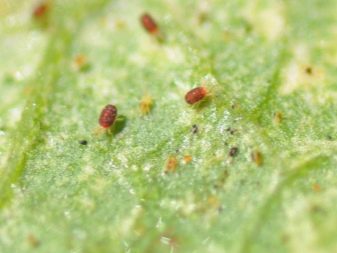
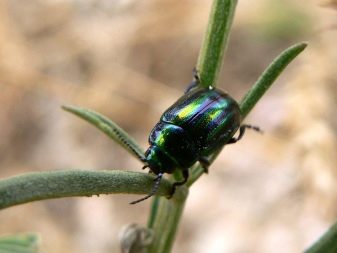
To prevent the harm that insects bring with them, you need to take care of treating the bushes with special compounds that strengthen the immune system. Usually insecticides are used, less often they resort to a mechanical method of removing insects from bushes.

As for diseases, they can be provoked by improper care of the plant. Failure to comply with agrotechnical recommendations can lead to the development of rot and other diseases, in the fight against which both special preparations and folk remedies will help. Before using concentrated formulations, you should carefully read the instructions.
Additionally, gardeners recommend pruning lavender when infected or dry stems and branches are found.

Reproduction
Narrow-leaved lavender is considered a fairly common crop among summer residents. Therefore, questions often arise as to how to properly propagate a bush so that it quickly takes root.
Seeds
The easiest way to reproduce, but at the same time the longest in time. It will take a lot of time and effort to achieve the desired result, but gardeners still often resort to propagating lavender seeds.
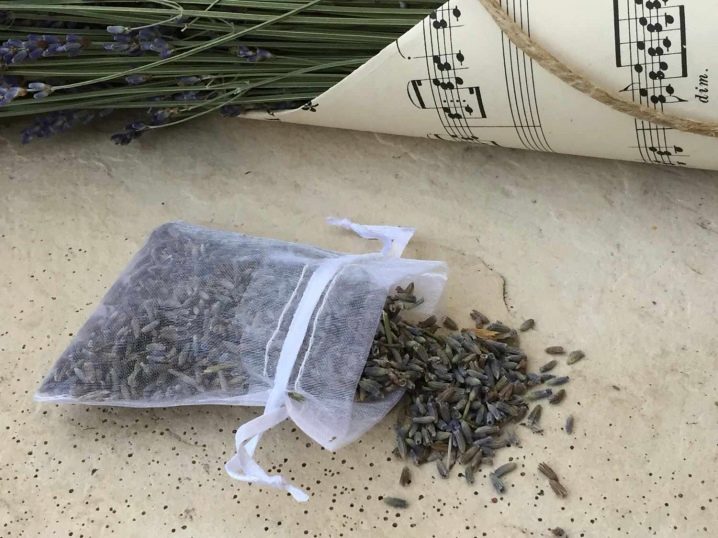
Stages.
-
Seed material is selected, disinfected and processed to strengthen immunity and rapid growth.
-
Ready-made seeds are sown in early spring in prepared containers with a fertile mixture.
-
The surface is filled with peat or sand.
-
Sprinkle abundantly and cover with gauze or glass.
-
Put in a cool place.
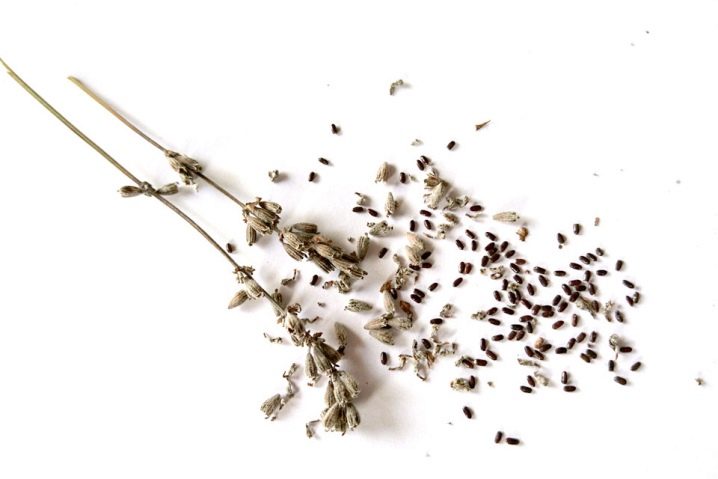
Once strong lavender seedlings appear, they are transplanted into the soil. Usually, planting work is resorted to when 4 or more leaves are formed on the sprouts. The transplant process takes place in May.
Stem layering
Lavender branches, despite their erect position, bend quite well. Therefore, the plant is often propagated by stem branches.
Scheme.
-
The strongest shoots are chosen first.
-
Then they are carefully bent to the ground so that they go from the bush like rays.
-
The third stage involves digging holes, where the ends of the bent branches will be placed. To fix the elements of the bush, they are pinned and sprinkled with soil.
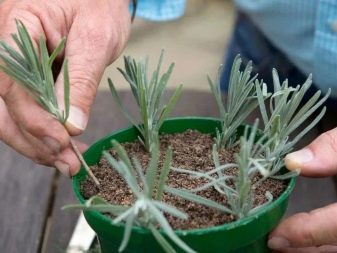
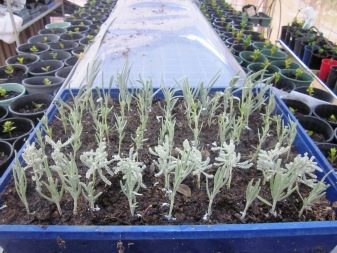
In order for the branches to quickly take root in the soil, you need to take care of regular watering. Cutting off from the mother bush is carried out a year later in the spring. This time will be enough for the plant to take root.
Cuttings
The second most popular breeding method, which does not require much effort and a lot of time. The procedure begins mainly in early July or late June.
Stages.
-
First, on an adult bush, the shoots that have formed this year are pruned.
-
Further, the middle part is taken from the trimmed shoots, cutting off the edges.
-
The remaining piece is additionally divided into small cuttings up to 15 cm long.
-
The finished segments are buried in the ground with the lower end. It is better to plant in a greenhouse so that the branches take root faster.
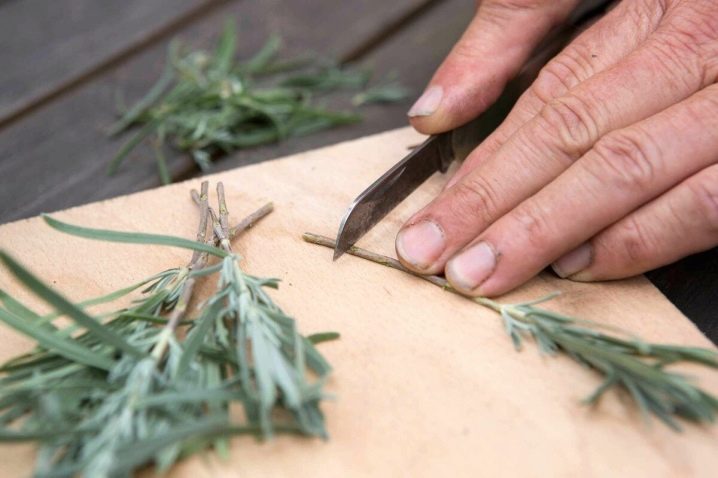
Gardeners recommend periodically ventilating the greenhouse. This will prevent the plant from rotting.And you should also take care of regular watering so that the lavender receives the necessary nutrients for growth.
A small bush can be transplanted when the seedling has developed strong roots. The optimal time of the year is autumn. Then the plant will not experience additional stress and will immediately leave during the dormant period.
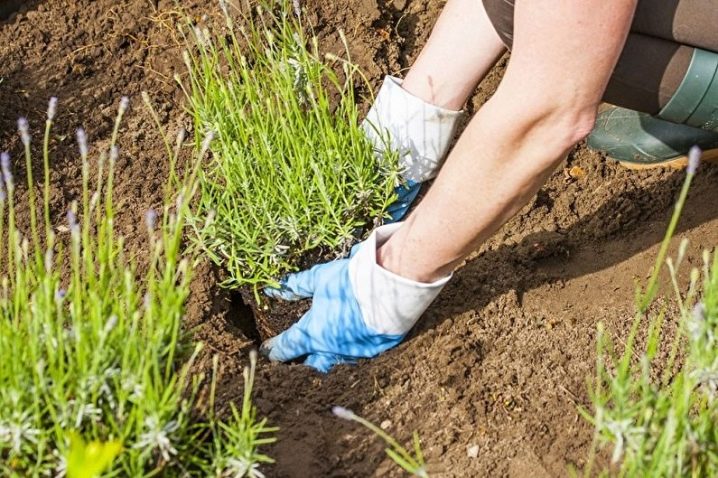
Lavender in landscape design
Narrow-leaved lavender is found mainly in the Mediterranean and is the natural habitat of an attractive plant. Bushes are often found in the mountains, adjacent to edelweiss. Such characteristics indicate the frost resistance of the plant, which is popular both among gardeners and among the owners of large enterprises for the production of cosmetics and perfume, as well as landscape designers.
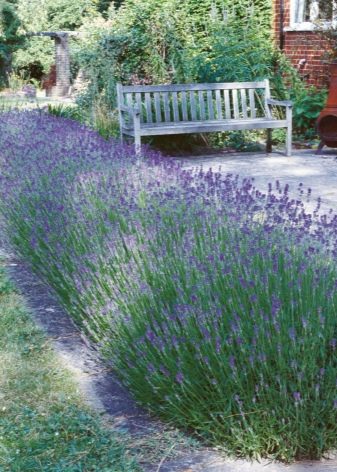

Interestingly, in Europe they are mainly interested in the scent of the flower. Therefore, in Western countries, preference is given to creating various perfumes and incense from lavender flowers. In Russia, bushes are actively used in landscape design, forming unique compositions.
Lavender can often be found in local areas as a hedge. In this case, preference is given to high varieties of narrow-leaved lavender, whose shoots grow up to a meter. During the flowering period, such hedges in the landscape are eye-catching.
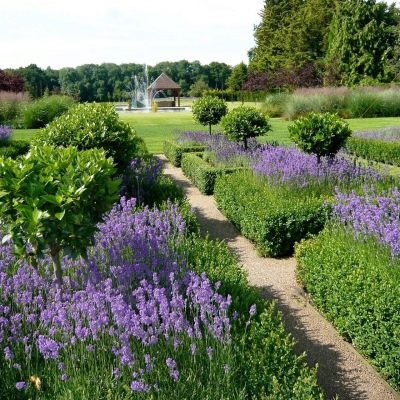







































































































The comment was sent successfully.